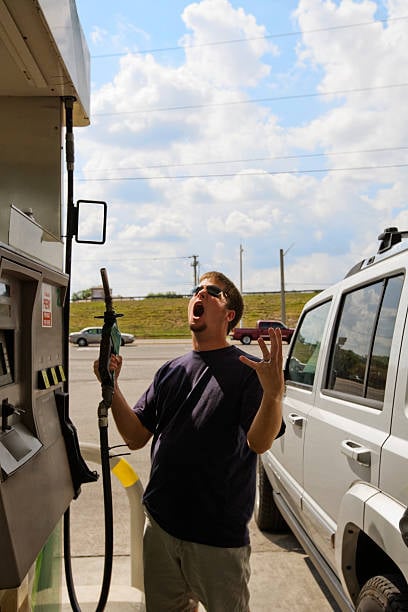
The landscape for gas stations and convenience stores has long been subject to upheaval. Fuel price volatility, consumer travel and spending habits, and technological transformations all impact this industry in substantial ways. For store owners, the difference between success and failure is often the ability to foresee and proactively adapt to change. And that means having access to good data. From short term changes to long term shifts, here are a few predictions to keep an eye on in the coming months and years.
Gas Prices Leveling Off After Steep Decline
According to analysts at GasBuddy, gas pricing through the end of 2017 will probably continue to drop a little after the summer high (following a typical seasonal pattern). Overall, prices have been declining year over year since 2012. GasBuddy’s fuel outlook report stated a near-consensus about the reason, “the primary cause for suppressed U.S. gasoline prices has been the decline in crude prices; the substantial and consistent downward pressure on global crude oil caused by the global imbalance that is maintained and strengthened by all parties involved.”
However, 2017 is expected to end with an average national price that is 36 cents above the average price in 2016 and more in line with 2015 levels. It’s a modest bump that represents $52 billion in additional fuel costs for motorists over the course of the year. There’s no telling how long the plateau may continue. But it does signal a pause in the precipitous drop that started five years ago.
More Motorists Will Rack Up Road Trip Miles
That’s the outlook according to Ford Motor Company in their recent white paper for 2017. They found that 10% more families are planning to take a road trip compared to last year. And the good news for gas stations is that the reasons people are traveling by car will likely strengthen over time. Many Gen X vacationers insist on creating their own itineraries, and this independence is best achieved when traveling by car.
Seventy two percent of Millennials are enamored with novel experiences more than material stuff—and they are roaming across the U.S. to rack up those adventures. While youth are excited to hit the open road and Instagram every moment, parents are using road trips to get away from technology and reconnect with their kids. All these demographics are looking for ways to hit the road and will help drive gas consumption now and in coming years.
Consumer Demand for Healthy Snacks Continue to Rise
While soft drinks, chips, and sweet snacks continue to be hugely popular in convenience stores, the hunger for healthier options has turned out to be more than just a fad. According to CStoreDecisions.com, chains like Pilot Flying J are creating their own lines of healthy menu options with proprietary brands like “PJ Fresh Marketplace” and even offering made-to-order sandwiches. Other convenience stores are reaching out to third party supplies of premade foods including salads, wraps, fruit cups, and more. Gluten free, allergen-friendly options are on the rise, and stores are learning to label healthier options in eye-catching ways to attract the more nutrition-conscious customer. On a side note, since Millennials love self-service, the whole in-store kiosk trend that’s been talked about for the last decade might really start to see a surge of interest.
More Gas Stations Will Start Charging Electric Cars
The fuel and retail sectors are starting to seriously consider how to capitalize on the fact that electric cars are here to stay. Since profits are about in-store sales rather than fuel sales anyway, it’s vital for the ongoing health of the convenience store model to ensure that consumers have a reason to stop in. Technology is one part of the equation. New charging stations like the liquid-cooled 400 kW DC charging station from Chargepoint will make it possible to give consumers a 100 mile range with just 15 minutes of charging.
Solar powered charging stations will allow some convenience stores to directly generate the power they sell to motorists—shifting the dynamic away from dependence on fuel suppliers and the ups and downs of the oil market (Total is already putting a solar-charging plan into action). Shell has also announced that charging stations will be deployed in Britain and the Netherlands in 2017. The U.S. is sure to follow as electric cars continue to gain popularity. Consumers will be spending a lot more time inside convenience stores per visit since even rapid charging takes much longer than pumping gas. This means store proprietors will have much more time to sell, sell, sell.
While speculation abounds regarding the future of gas stations across America, one thing is certain. Motorists will always need a place to recharge and refuel no matter where they go or what they drive. Businesses that keep their focus on giving these consumers what they want should do well.





.webp?width=500&name=tl(15).webp)
